Home » Wind Energy » Wind Energy Characteristics
Wind Energy Characteristics
Wind energy is a form of solar energy. Wind is caused by the uneven heating of the atmosphere by the sun, variations in the earth's surface, and rotation of the earth. Mountains, bodies of water and vegetation influence wind flow patterns. Wind speeds vary based on geography, topography and season. As a result, there are some locations better suited for wind energy generation. Wind energy is a special form of kinetic energy in air as it flows. Wind energy can be either converted into electrical energy by power converting machines or directly used for pumping water, sailing ships, or grinding gain.
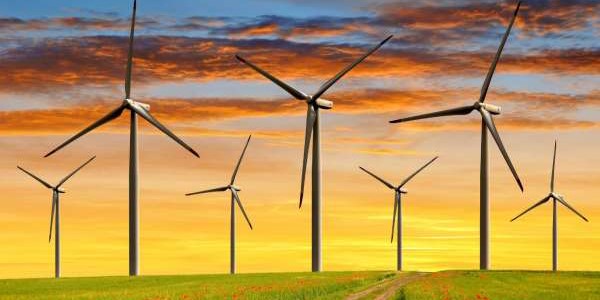
Wind power
Kinetic energy exists whenever an object of a given mass is in motion with a translational or rotational speed. When air is in motion, the kinetic energy in moving air can be determined as:
 is the mean wind speed over a suitable time period. The wind power can be obtained by differentiating the kinetic energy in wind with respect to time, i.e.:
is the mean wind speed over a suitable time period. The wind power can be obtained by differentiating the kinetic energy in wind with respect to time, i.e.:
 is the air density and A is the swept area of blades. Substituting (3) into (2), the available power in wind Pw can be expressed as:
is the air density and A is the swept area of blades. Substituting (3) into (2), the available power in wind Pw can be expressed as:
Blade swept area
As shown in the picture below, the blade swept area can be calculated from the formula:
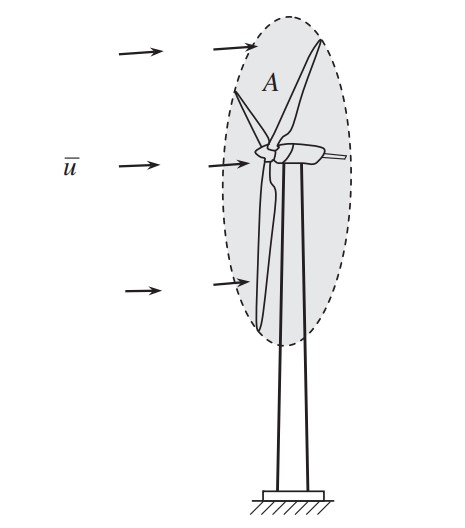
Wind power density
Wind power density is a comprehensive index in evaluating the wind resource at a particular site. It is the available wind power in airflow through a perpendicular cross-sectional unit area in a unit time period. The classes of wind power density at two standard wind measurement heights are listed in the table.
Some of wind resource assessments utilize 50m towers with sensors installed at intermediate levels (10m, 20m, etc.). For large-scale wind plants, class rating of 4 or higher is preferred.
As technology continues to develop and advance, the height of wind turbine towers is increasing to accommodate stronger wind speeds and more distant areas of energy development. Higher towers can bring higher power generation efficiency and greater economic benefits. At the same time, different use occasions have different requirements for the height of wind turbine towers. For example, in high wind speed areas such as coastlines and mountainous regions, taller towers can better utilize wind energy resources. In cities and other low wind speed areas, lower towers can save land resources and reduce the impact on the environment.
As a clean and renewable energy source, wind power has a wide range of application prospects and development potential, and it is believed that in the future development, the use of wind turbines will be more flexible and diversified occasions.

Wind power
Kinetic energy exists whenever an object of a given mass is in motion with a translational or rotational speed. When air is in motion, the kinetic energy in moving air can be determined as:
(1) 
where m is the air mass and 
(2)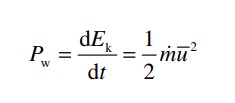
However, only a small portion of wind power can be converted into electrical power. When wind passes through a wind turbine and drives blades to rotate, the corresponding wind mass flowrate is:
(3) 
where 
(4) 
An examination of (4) reveals that in order to obtain a higher wind power, it requires a higher wind speed, a longer length of blades for gaining a larger swept area, and a higher air density. Because the wind power output is proportional to the cubic power of the mean wind speed, a small variation in wind speed can result in a large change in wind power.
Blade swept area
As shown in the picture below, the blade swept area can be calculated from the formula:
(5)

where l is the length of wind blades and r is the radius of the hub. Thus, by doubling the length of wind blades, the swept area can be increased by the factor up to 4. When l >> 2r , A ≈ Π l 2.

Wind power density
Some of wind resource assessments utilize 50m towers with sensors installed at intermediate levels (10m, 20m, etc.). For large-scale wind plants, class rating of 4 or higher is preferred.
| Wind power class |
10m height
Wind power density (W/m2)
|
10m height
Mean wind speed (m/s)
|
50m height
Wind power density (W/m2)
|
50m height
Mean wind speed (m/s)
|
| 1 | <100 |
<4.4 |
<200 | <5.6 |
| 2 | 100-150 | 4.4-5.1 | 200-300 | 5.6-6.4 |
| 3 | 150-200 | 5.1-5.6 | 300-400 | 6.4-7.0 |
| 4 | 200-250 | 5.6-6.0 | 400-500 | 7.0-7.5 |
| 5 | 250-300 | 6.0-6.4 | 500-600 | 7.5-8.0 |
| 6 | 300-350 | 6.4-7.0 | 600-800 | 8.0-8.8 |
| 7 | >400 | >7.0 | >800 | >8.8 |
As technology continues to develop and advance, the height of wind turbine towers is increasing to accommodate stronger wind speeds and more distant areas of energy development. Higher towers can bring higher power generation efficiency and greater economic benefits. At the same time, different use occasions have different requirements for the height of wind turbine towers. For example, in high wind speed areas such as coastlines and mountainous regions, taller towers can better utilize wind energy resources. In cities and other low wind speed areas, lower towers can save land resources and reduce the impact on the environment.
As a clean and renewable energy source, wind power has a wide range of application prospects and development potential, and it is believed that in the future development, the use of wind turbines will be more flexible and diversified occasions.
Post a Comment:
You may also like:

Featured Articles
What Are the Advantages of Wind Energy?
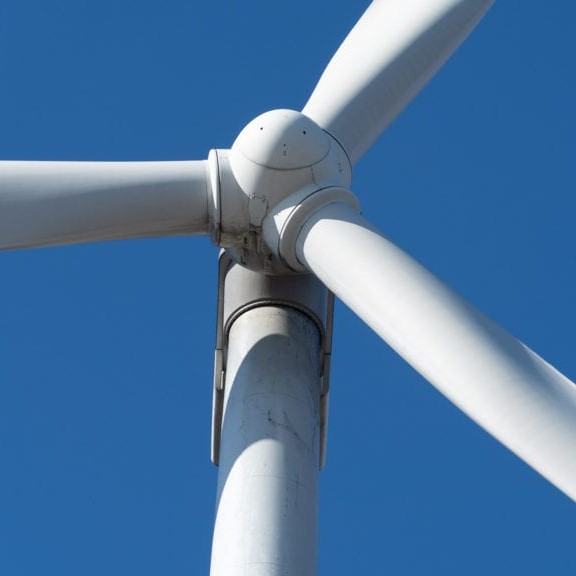 Wind power is the fastest-growing source of electricity worldwide. The American Wind Energy Association estimates that more ...
Wind power is the fastest-growing source of electricity worldwide. The American Wind Energy Association estimates that more ...
 Wind power is the fastest-growing source of electricity worldwide. The American Wind Energy Association estimates that more ...
Wind power is the fastest-growing source of electricity worldwide. The American Wind Energy Association estimates that more ...Technical Potential for Wind Energy
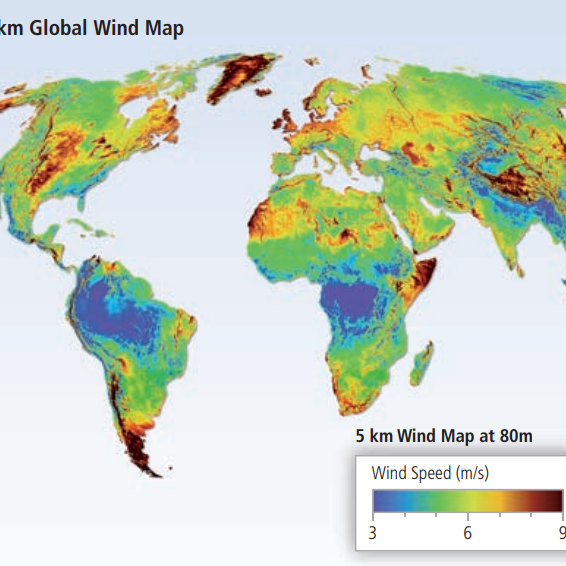 The theoretical potential for wind, as estimated by the global annual flux, has been estimated at 6,000 EJ/yr. The global ...
The theoretical potential for wind, as estimated by the global annual flux, has been estimated at 6,000 EJ/yr. The global ...
 The theoretical potential for wind, as estimated by the global annual flux, has been estimated at 6,000 EJ/yr. The global ...
The theoretical potential for wind, as estimated by the global annual flux, has been estimated at 6,000 EJ/yr. The global ...Wind Energy Background
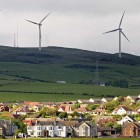 The kinetic energy in the wind is a promising source of renewable energy with significant potential in many parts of the world. ...
The kinetic energy in the wind is a promising source of renewable energy with significant potential in many parts of the world. ...
 The kinetic energy in the wind is a promising source of renewable energy with significant potential in many parts of the world. ...
The kinetic energy in the wind is a promising source of renewable energy with significant potential in many parts of the world. ...What is the Wind Energy Conversion ...
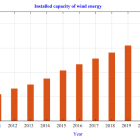 Due to technical and economic visibility, wind power has emerged as one of the most promising renewable energy sources ...
Due to technical and economic visibility, wind power has emerged as one of the most promising renewable energy sources ...
 Due to technical and economic visibility, wind power has emerged as one of the most promising renewable energy sources ...
Due to technical and economic visibility, wind power has emerged as one of the most promising renewable energy sources ...How Wind Energy is Collected and ...
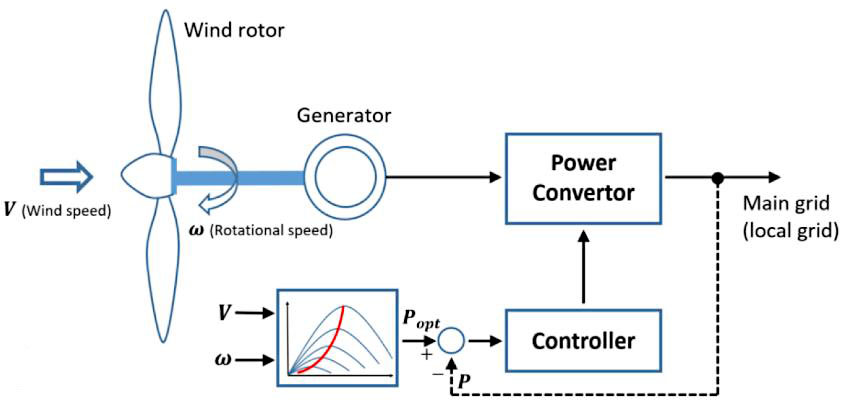 Wind energy is a form of solar energy. Earth’s atmosphere is unevenly heated by solar radiation and the air is in constant motion ...
Wind energy is a form of solar energy. Earth’s atmosphere is unevenly heated by solar radiation and the air is in constant motion ...
 Wind energy is a form of solar energy. Earth’s atmosphere is unevenly heated by solar radiation and the air is in constant motion ...
Wind energy is a form of solar energy. Earth’s atmosphere is unevenly heated by solar radiation and the air is in constant motion ...